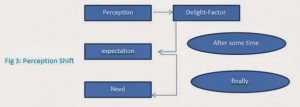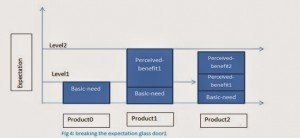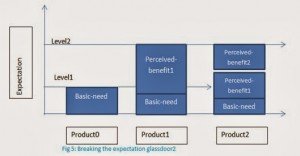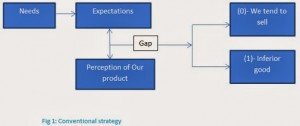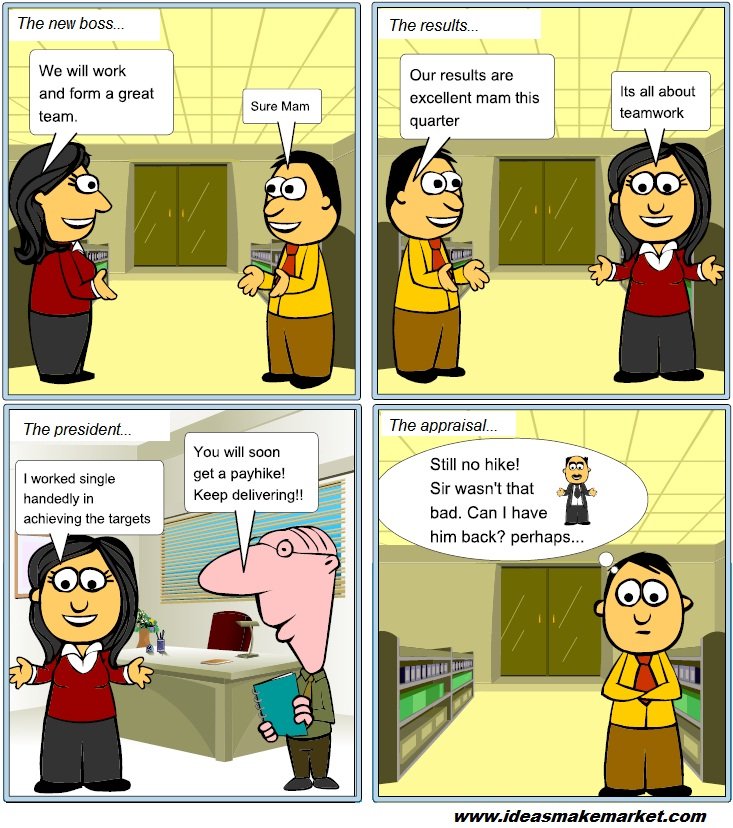Most of us believe expectation level of the customer must be met in order to sell. But as the market competition is increasing, similar products are flooding the market, it is not just enough to meet the expectations. The Luxury and durable market are already under the pressure to go beyond the expectations, but why?
Basically a conventional market the condition is as follows: The companies keep striving to meet the customer’s expectations.
But for the Luxury segments the model differs a bit, they go beyond what the customers expect their product to be, in order to introduce the delight factor.
Thus it is the delight-factor that leads to the sales; customer’s perception should exceed their expectations in order experience the delight factor. The delight-factor is important because it addresses the self –concept of the buyer, helping them make a style statement or enhance their status symbol.
Delight-factor influences customer’s perception thus should be very carefully chosen keeping in mind the legacy of the product and the value proposition of the brand. A delight factor could be a direct benefit or it can be a perceived benefit that leads to a sort of irrational buying behaviour by the customer.
The perception shift & repositioning a necessary evil
It is believed that the expectation of the customers is rising, i.e. gap between the perceptions and the expectations is reducing. If, given a second thought we can also say a perception shift is happening i.e. shifting down of the delight factors to the expectations and finally to the needs. It means that as the time passes on the delight factors moves down to the expectations i.e. the delight factors is no more delight but what normally a customer may expect, as time passes further the factor finally becomes a need for the customer. To be kept in mind that as the factor moves down, it also loses its perceived importance.
Thus companies keep on adding a delight-factor after some time gap by using repositioning and brand communication strategies. It is a necessary evil because as we add a delight factor to the product after sometime will add to and raise the expectation level.
The Expectation Glass Ceiling:
The expectation glass ceiling is the customer’s expectation level; I call it so because to get super normal growth and market share we need to break that glass ceiling every time by adding the delight factor, else we would be undifferentiated.
The Delight factor that we offer should meet two conditions:
1.Novelty.
2. Have a connect with previous benefits.
Talking about the newness of the Idea, the newness gives the height to the product to break the glass ceiling of expectation. A similar offering presented in a different way will never give us enough height to meet the expectation level. One more thing the new offering must be significant for the same reasons.
As shown in the above figure the product0 satisfied only basic need and that itself was a delight factor. But after sometime the delight factor became the expected benefit and thus the expectation glass ceiling level1 was created. Product1 broke it because it had a significant and a novel perceived benefit to offer. But product2 was not able to break it because the offering was not significant.
Similarly there should be a connect between the benefits offered, in other words the new offering should ideally be in sync with what was previously offered. A conflicting benefit if offered will either replace the existing thereby not giving enough height, or it might not have the connect with the previous offers, which won’t give it the power to break the ceiling, since I believe that the connection between the offering transfers energy to break ceiling. As shown in figure the product2 couldn’t break the ceiling since it lacked connect.
Thus to sum up this model will give us a direction to work upon for differentially position our product in the competitive environment and avoid any repositioning blunders.

